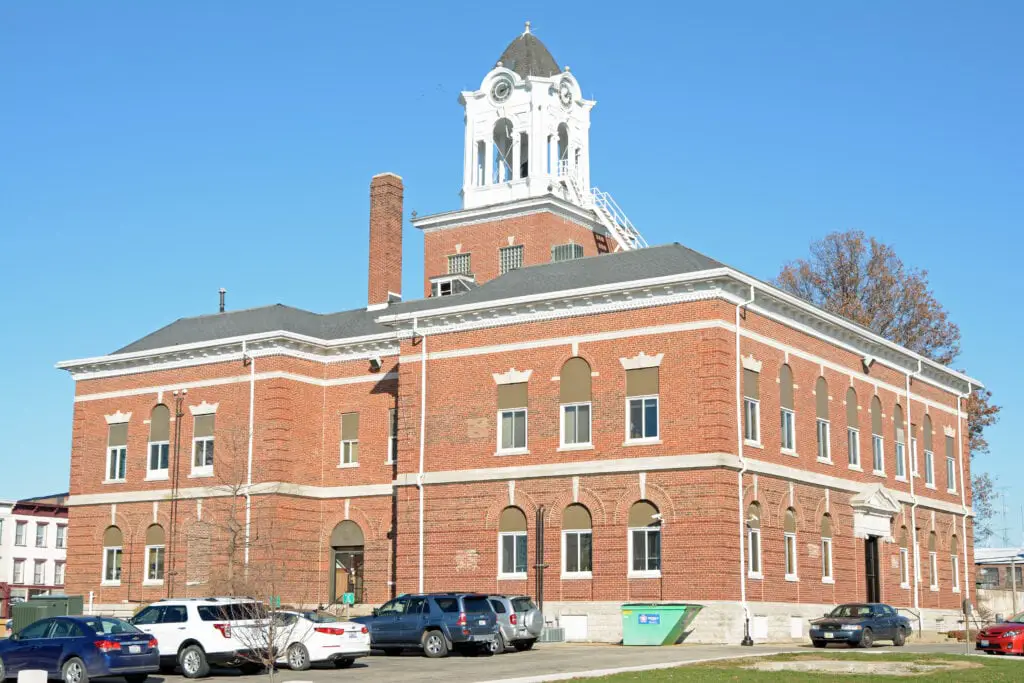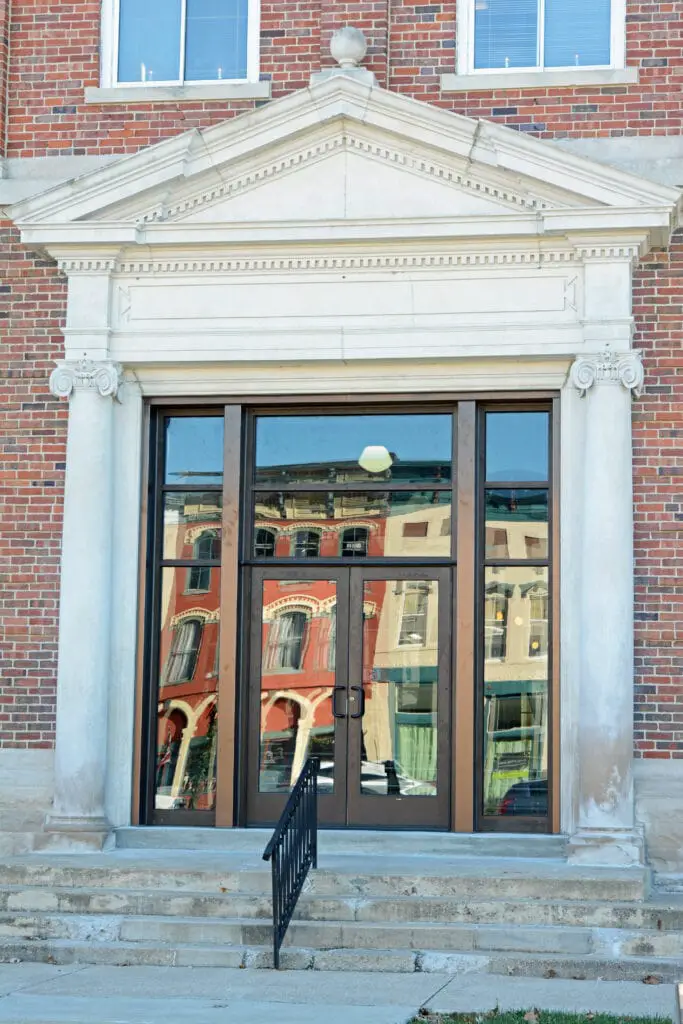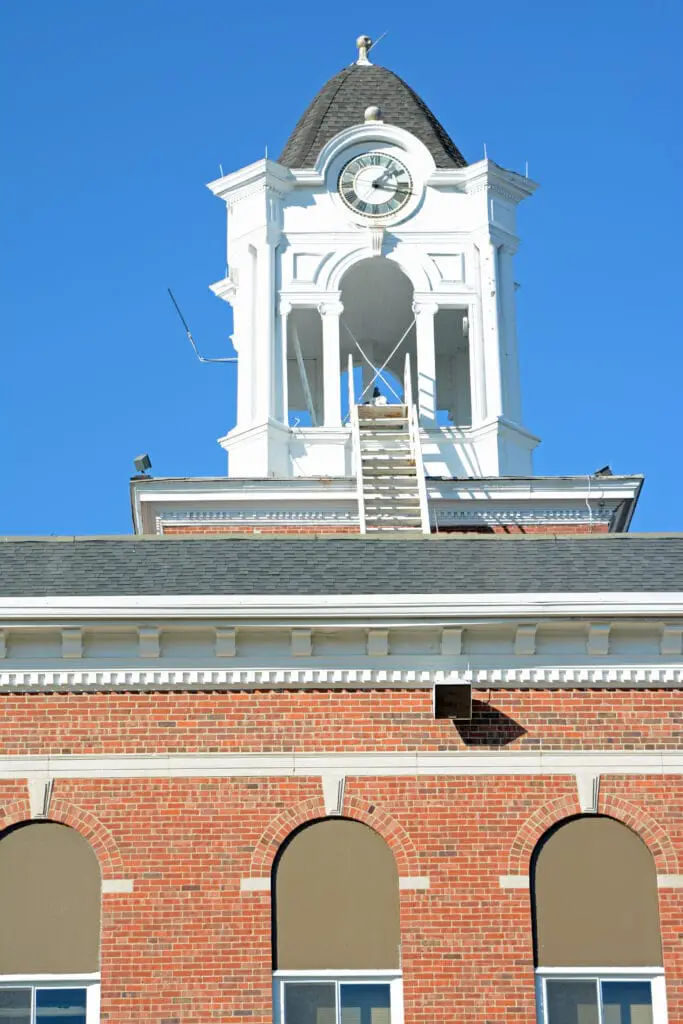Echoes from the Past: Early History
The story of the Clark County Courthouse, a prominent government building in Marshall, IL, is as rich and layered as the soil of Illinois itself.
The courthouse we see today, completed in 1903, is the fifth iteration in the third community in Clark County's history.
Our journey began in the early 19th century. The first settlers in what would become Clark County arrived in 1815, following the end of the War of 1812.
In 1819, the General Assembly took the initiative to carve out Clark County from Crawford County.
A commission was put into place to determine the site of the new county seat. The chosen location was named "Aurora," but no proper courthouse was ever built there.

The county's administrative operations were initially housed in a modest log building, later repurposed into a corn crib.
By an 1823 law, the seat was moved to McClure's Bluff (now Darwin) on the Wabash, where a 1½-story log courthouse was ordered in 1825.
A New Era: Relocation and Rebuilding
As Clark County grew, it became clear that Darwin, located far from the new National Road, was inconvenient for the burgeoning population in the northern part of the county.
After a contentious debate and a countywide vote in 1837, Marshall defeated Auburn as the new county seat.
A new Federal-style courthouse, the third in Clark County's history, was built in Marshall, Illinois 1839. In 1887, the existing structure gave way to a new brick building designed in the fashionable Second Empire style.
Unfortunately, this new courthouse experienced a brief lifespan - a devastating fire razed it to the ground after merely fifteen years in service.

The Current Clark County Courthouse: A Monument of the New Century
Following the disastrous fire, county authorities commissioned the construction of a new courthouse in 1903. The year's close completed the work, and the courthouse was formally inaugurated in 1904.
The courthouse is majestically a two-story tower made of brick, punctuated by a central dome and a clock tower. The Renaissance Revival style heavily influenced its architecture.
The building's overall design is distinguished by its rectangular plan and stone foundation raised slightly above the lawn.
A small set of stairs accesses the main entrance, and a cornice with corbelling supports the roof's edge on each side.
A stairway extends from the rooftop to the southern side, leading up to the bell tower. On the northeastern edge of the lawn, a bandstand proudly stands.

Recent Events: A Symbol of Community Spirit
The Clark County Courthouse is a hub of community activity. Significant events include the appointment of Tracy W. Resch as Presiding Judge in 2020, further cementing the courthouse's role in maintaining law and order in the county.
The clerk's office functions diligently, operating from Monday to Friday and serving as a vital resource for the community.
Whether citizens visit to conduct business or learn more about county governance, the clerk's office strives to keep its doors open and accessible to all, reflecting the spirit of service that defines the courthouse.
Perhaps the most recent and exciting addition to the courthouse is unveiling the world's most giant gavel, a massive piece of red oak that stands as an iconic symbol of justice.
Over 16 feet long, this gavel was unveiled in 2018, following two years of meticulous craftsmanship.
It now proudly adorns the front porch on the east side of the courthouse, serving as a testament to the community's innovative spirit and commitment to justice.
A Historic Site: Preserving the Past for the Future
In 2013, Central Marshall gained recognition when it, along with the Clark County Courthouse, was designated as a historic district and included in the National Register of Historic Places.
Many other contributing properties are smaller buildings facing the courthouse square, all contributing to the area's rich historical tapestry of the site.
In the spirit of preservation and continued relevance, the courthouse hosts community events like the annual summer concert performed by the Marshall Municipal Band on the gazebo on the courthouse lawn.
As the music fills the air, one can't help but feel a connection to the past and a sense of optimism for the future, capturing the essence of what the Clark County Courthouse represents: a proud history, an active present, and a promising future.

Conclusion
The Clark County Courthouse is more than just a building; it's a living piece of history. Walking through its halls, you are not just stepping on polished tiles but walking through history. The courthouse is a testament to the community's resilience, growth, and enduring spirit.
